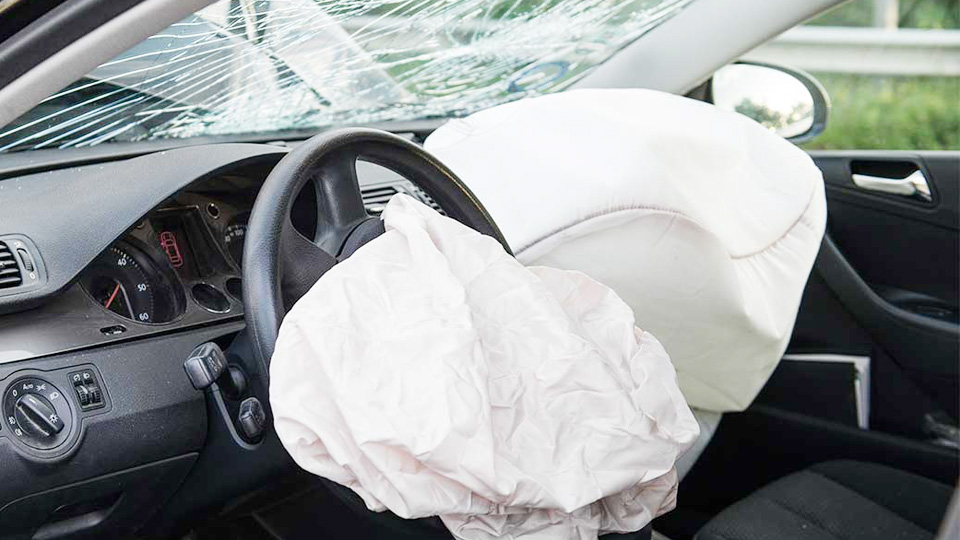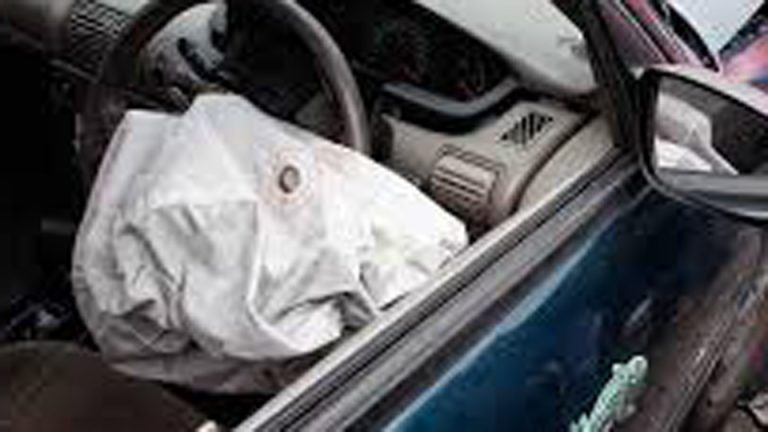Ever wondered how airbags actually reduce injuries during car crashes? Let’s break down the science using physics principles like force, impulse, and momentum — and see how milliseconds of engineering save lives.
Why Physics Matters in Car Safety
Imagine you’re driving at 60 mph when, suddenly, there’s a crash. Your car comes to a stop in a split second—but your body keeps moving. What saves you from slamming into the dashboard or windshield? In most cases, it’s a properly deployed airbag.
Airbags aren’t magic—they’re meticulously designed safety devices grounded in physics. From impulse and momentum to force distribution and pressure, airbags apply real-world physics principles to reduce injury during collisions.
As someone who geeks out over both cars and physics, I’ve always been fascinated by how such a small, fast-acting system can have such a big impact—literally. So in this post, we’re diving deep into the why and how airbags work from a physics perspective.

Photo by colombotelegraph
Section 1: What Happens During a Car Crash?
Before we get into airbags, it’s important to understand what happens in a crash from a physics standpoint.
Newton’s First Law – Inertia
When your car hits something and stops, your body wants to keep going. That’s Newton’s First Law: objects in motion stay in motion unless acted on by a force.
Without a seatbelt or airbag, your body would slam into the steering wheel, dashboard, or windshield with the same speed the car was moving—just redirected.
Newton’s Second Law – Force = Mass × Acceleration
Force is directly related to how quickly your motion changes (acceleration or deceleration). The faster you stop, the more force your body experiences.
This is where things get dangerous. If you stop suddenly (in a fraction of a second), the force on your body can be fatal. But if that stop is spread out over even a few hundredths of a second more, the force drops significantly.
And that’s where airbags come in.
Section 2: The Impulse-Momentum Theorem – The Key to Injury Prevention
This is the central physics principle behind how airbags reduce injury.
The Equation:
Impulse = Change in Momentum
Or, F × Δt = m × Δv
Where:
- F = Force
- Δt = Time duration of force
- m = Mass
- Δv = Change in velocity
How Airbags Use It:
Your change in velocity (Δv) is fixed—the car’s going to stop. Your mass (m) is also fixed. So the only variable you can increase is time (Δt).
An airbag increases the time it takes for your body to come to a stop during a crash. Even increasing that time by just 0.05 seconds can significantly reduce the force on your body.
Bottom Line:
The longer it takes you to stop, the smaller the force on your body.
Section 3: How Airbags Physically Work
Let’s shift gears from theory to the actual mechanics of an airbag system.
Crash Detection
Sensors in the car (usually accelerometers) detect a sudden deceleration (like hitting a wall or another car). If the deceleration crosses a threshold (usually equivalent to hitting a wall at 10–15 mph or more), the airbag system is triggered.
Ignition of Propellant
A signal is sent to a small explosive charge, which ignites a gas-generating compound—usually sodium azide (NaN₃) or a safer alternative like guanidine nitrate.
This reaction produces nitrogen gas (N₂) rapidly—filling the airbag within about 30 milliseconds.
Deployment
The airbag bursts out from its compartment in the steering wheel, dashboard, or side panel. It expands in front of the occupant’s body, cushioning the impact.
Deflation
The bag immediately starts deflating through vents, allowing you to sink into it without bouncing off—preventing what’s known as rebound injury.
Section 4: Physics Concepts at Work
Airbags reduce injury by applying several physics strategies. Let’s break them down:
Increasing Time of Deceleration (Δt)
As already explained, this reduces force. The airbag catches your body and decelerates it over a longer period than a hard dashboard would.
Spreading Force Over a Larger Area
Force is also related to pressure:
Pressure = Force / Area
Airbags distribute the stopping force over a large surface—your entire torso and head—instead of a concentrated area like your nose or chest.
This reduces the chance of localized injuries like rib fractures or facial trauma.
Preventing Elastic Collisions
If you hit the windshield and bounce back, that’s an elastic collision—causing even more trauma.
Airbags absorb your motion and deflate in a controlled way. This makes the collision more inelastic, dissipating energy as heat and reducing rebound forces.
Reducing Peak Acceleration
High peak accelerations cause internal injuries. Airbags reduce peak g-forces on the body, allowing smoother deceleration.
Section 5: The Role of Airbags With Seat Belts
Airbags are not meant to be used alone. In fact, they’re designed to work with seat belts.
- Seat belts restrain your body, keeping you in the proper position for the airbag to protect you.
- Airbags cushion the deceleration, preventing your head and chest from slamming into the steering wheel or dashboard.
Without a seat belt, you could be too close to the airbag when it deploys—possibly causing injuries due to the rapid inflation.
Section 6: Airbag Injuries – Why They Still Happen
While airbags greatly reduce the chance of fatal injuries, they can cause:
- Facial abrasions and burns
- Broken glasses or nose bridges
- Forearm fractures or wrist injuries (from hands on the steering wheel)
Most of these are minor compared to the injuries you’d sustain without the airbag. Also, modern dual-stage and “smart” airbags adjust inflation speed based on seat position and occupant size.
Section 7: Airbag Evolution and New Technologies
Modern vehicles include multiple types of airbags:
- Front airbags – Required since 1999 for all new cars in the US.
- Side airbags – Protect torso during side impacts.
- Curtain airbags – Drop from the roofline to protect the head.
- Knee airbags – Reduce leg injuries.
- Rear-seat airbags – Now emerging in luxury and family cars.
There’s even external airbags in testing—deployed outside the car before a side collision to act like a crumple zone!
Section 8: Case Study – Let’s Do the Math
Let’s say:
- You weigh 70 kg (≈ 154 lbs)
- You’re in a car going 15 m/s (≈ 34 mph)
- You hit a wall and come to a stop
Your change in momentum =
Δp = m × Δv = 70 kg × 15 m/s = 1050 kg·m/s
No airbag:
Δt = 0.02 s
F = Δp / Δt = 1050 / 0.02 = 52,500 N
With airbag:
Δt = 0.1 s
F = 1050 / 0.1 = 10,500 N
Result: The airbag reduces the force on your body by 80%—from 52.5 kN to 10.5 kN.
That’s the difference between life-threatening trauma and walking away shaken but safe.
FAQs: Physics of Airbags
Why not just use softer dashboards?
Soft materials still don’t extend deceleration time enough. Airbags inflate instantly and create space between you and hard surfaces.
Do airbags work the same for all vehicles?
The physics is the same, but deployment timing and inflation volume vary based on the car’s size, seat position, and sensor design.
Can airbags hurt small passengers?
Yes—airbags can injure small adults or children sitting too close. That’s why rear-facing child seats must never go in front of an active airbag.
How fast do airbags deploy?
Typically within 20 to 40 milliseconds after crash detection.
Read More on it..
Final Thoughts: The Physics That Saves Lives
Airbags are a prime example of applied physics saving lives in the real world. By increasing the time of impact, spreading force, reducing pressure, and avoiding rebounds, they drastically reduce injury severity in crashes.
It’s a blend of chemistry, mechanical engineering, and physics—all timed to perfection in a split second. Every time you buckle up and see that little airbag light, know that there’s a small, silent system waiting to apply the laws of physics if things go wrong.
And now that you understand how it works, you can truly appreciate how science—and seconds—can make the difference between life and death.




